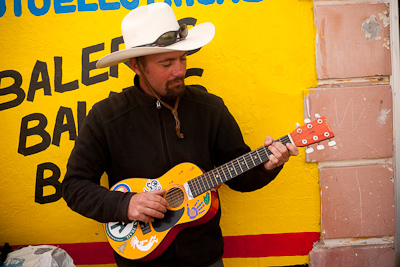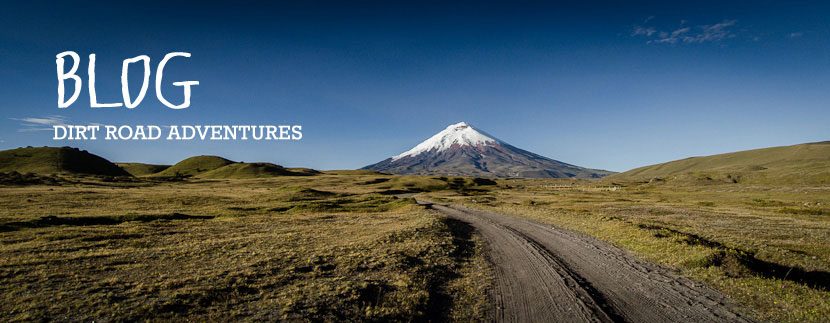Back in Tepehuanes we were lucky enough to bump into Abrahim, the town’s only mountain biker. Joining us for a ride, he steered us onto a disused train line that neatly avoided all contact with Mexico’s at times hellish main roads. Abrahim also put us in touch with other riders further south, who in turn have bounced us onwards to yet more contacts down the road. It’s been great.
I’d never have believed it, but it turns out there’s a fledgling but thriving mountain biking scene in the whole of Durango, with each town boasting as many as three or four bike clubs. Interestingly, there are far few roadies around – it seems riding pavement a razor width from 18 wheelers isn’t condusive to the Mexican cycling psyche either.
To me, connecting with locals from a different culture – whether on a ride or sitting round a table munching burritos – is infinitely more enjoyable than working my way through a list of ‘sights to see’. In fact, though I do dip into a guidebook from time to time, I’m not carrying one at the moment. When I hit towns or cities, I’m often quite happy enough simply to amble around or go about my chores – checking over the bike, searching out the best eateries in an attempt to placate the cyclist’s insatiable hunger, catching up with the world wide web, perhaps even washing my dust-soaked clothes… Cycle touring is all about the journey, and given how eventful this inevitably is, I have no qualms about being distinctly lazy when I do finally make my destination.
Plus, hooking up with riders here is a great way of tapping into local knowledge, unearthing dirt roads and singletrack that, more often than not, aren’t marked on any map. Mexico is a great country to cycle across, but it’s well worth making the effort to escape the main roads for both survival and enjoyment…

‘I am a biker!’ Jorge, Jaime and Jose Ramon met us at the entrance to Santiago Papasquiaro, and took us under their wings for the next few days. We camped in a large garden, sharing our space with peacocks, chickens and wifi.

That evening, before we were treated to a dinner of burritos in a local eatery, we swung by the bike shop that hosts the club’s meets so we could meet everyone.

It was a happening scene, with various parts and bikes in states of disrepair dangling from the rafters.

Workshop clutter. I like the image of Gouadeloupe behind the wheel truing stand. On the opposite wall there was a poster of a naked women smoothered in chocolate. The macho culture is strong in Mexico. As Jorge said: I am single. My wife is married to me!

The next day, we headed out for a dirt road ride with some of the Coconos Salvajes – The Wild Turkeys – as the club is called.

Then, after a brainstorming session, they put us on a backroad towards Durango – a stunning trail, and one we’d never had found ourselves.

It wound its way over a small mountain range, completely off the beaten track, far from the madding crowd.

In fact, Jose Ramon, not content with hosting us in his garden and plying us with food, even insisted on following us in his team truck, carrying our bags for the first 30 kilometres so we could enjoy it all the more.

The descent back down to the main road, linking Santiago to Durango. We’ve now hit the Durango Plains, a high altitude belt of land that, after the toils of the Sierra Madre Occidental, seem all but flat.

Still, we’re not quite out of the worst of it yet. Like many parts of Mexico, hostage taking is common. This happens around once a week in Santiago, with the victim usually snatched from a well-to-do family, and then ransomed back. Apparently the cut through we'd taken is a popular escape route, as it’s not often policed. Which is anothe matter in itself. As we were loading up our bikes once more, two cops in a swish sports car and body armour pulled over for a chat. When they’d left, Jose Ramon chose his words carefully: ‘Those guys are nice - one of them gets his hair cut with a bike club member. But don’t trust all the police. Be careful, there are all types. There’s a saying in Mexico: whoever sleeps, the river will take away.’

The Thorn Sterling is doing great; I’ve just changed my front Marathon Extreme, which has been on since Montana, and the chain is due for a replacement too. Even after all these years, my touring system is still evolving. I’m loving my Porcelain Rocket custom frame bag that Scott made me – ideal for layers, snacks, random bits and bobs… When I get the chance, I’ll post back my front rack to streamline my setup further for the warm months ahead.

We picked our way through backroads that ran parallel to the main highway, as we’d heard about a community of some 6000 mennonites who’d settled in Durango almost a century ago. Known for their diligent work, they were gifted swathes of land by the Mexican government before the revolution. Today, amid the context of muscle pickups, jangling tunes and Mestizo cowboys, their conservative manner seems out of place. They cut quite a sight; European, pale skinned and blue eyed women dressed in flowery dresses and wide brimmed hats, and men in old fashioned farming overalls, like a scene from Grant Wood’s American Gothic. Although times are changing, it’s still a very closed community, where High German is taught at school and Low German is their first language.

These settlements were in stark contrast to the Mexican pueblos, with their bright, garish colours, and locals who enjoy nothing more than an afternoon banter. If truth be told, we could have worked our way along the Sierra Carcaria all the way to Canatlan – the route of a yearly, two day club ride – but as we’d been told it would double our distance, we opted for the more mellow option.

These are the kind of trucks you have to contend with on the highways. Not much fun, especially when there’s no shoulder. And even when there is, cycle touring becomes more of a numbers game, a countdown to the next break to take. I far prefer the meanderings of a rarely used dirt road, even if it’s not the most direct line from A to B.

By the time we rolled into Canatlan, it was pouring. There, Janero, our bike club contact given to us in Santiago, generously took us out for a fish lunch, put us up in a hotel, and bought us a bottle of tequila to tide us through the night…

Best of all, we were treated to a breakfast of as many Gorditas – corn torillas wedged with meat, cheese, bean or cacti fillings - as we could eat at the restaurant of one of the club members. A veritable feast!

Jason took the opportunity to play some tunes while we were waiting for the rain to stop.

For the first time in a long while, we were then forced onto the highway – not the most relaxing experience, and another good reminder as to why we’ve been ferreting out quieter backroads. For the most part there was a generous shoulder, but when it did disappear, I had to hop off the bike to avoid being squished by a couple of trucks. Not so nice...

Still, the afternoon light cast a warm glow, and it was fast riding. The scenery as we approached the city itself was impressive too, and was once a popular location for Westerns; John Wayne filmed a few movies here, and went on to buy a ranch in the area.

Local hero. General Francisco Villa – or Pancho Villa – was born into a peasant family working on one of the largest haciendas in Durango. He played a pivotal role in the Mexican Revolution, which itself forms a key part of Mexico’s history, and carries through to the country’s leftish tendencies today.

The baroque style cathedral in Durango’s Plaza de Armas is considered one of the most beautiful buildings in northern Mexico. The city was founded in 1563. Unfortunately the silver that was anticipated to lie within its surrounding hills proved only to be iron-ore, unlike much of the rest of the silver-rich state.

As of a few months, Durango's main drag has been pedestrianised, though police stationed at every block took a stern view of us flouting this on our bikes.

Mexico is not just about chihuahuas. Thanks to the cycle tourer's network Warm Showers, we stayed with Frida and Jorge, who very kindly put us up at the very last moment. This is their pug, Yoda, a particularly calm pooch who liked nothing more than being swaddled in a blanket; very ET meets Mother Theresa.

Views from the church at the top of the city. The story goes that one of the generals used to practise aiming his cannons by firing up at the bell tower – eventually, he hit it and it had to be rebuilt.

It was also the spot where we were interviewed for a local Durango sports channel. Jeff spoke in Spanish, while the rest of us were subtitled. How cool is that!

The interviewer, Alejandro, was also a keen mountain biker, and I noticed this picture of Gouadeloupe on the top tube of his bike.

More colonial splendour. Once the home of a wealthy miner and landowner, the beautiful Casa del Conde Del Valle de Suchil is now a Banamex bank

Our man in Durango. Pancho sorted out our bikes in his workshop, tuning hubs and helping to replace chains, as well as guiding us all round town in search of the best maps for the ride to Zacatecas, our next stop.

Then, he and Miguelito took us on a great ride of the local area, culminating in an epic crossing of a now disused railway bridge that once serviced the mines – just watch out for the rickety sleepers.

Of course, no ride would be complete without some hearty Mexican cuisine…
The Need to Know Section
Distance: 215km
Navigation: Dirt road shortcut out of Santiago to Chinacates, then to avoid the highway, farm roads via Palestina to Nueva Ideal – though we should have popped out further still. There’s also a tough mountain route between Santiago and Canatlan.
Road conditions: Wonderful dirt road out of Santiago, then some corrugated, sandy sections through the Memonite villages. Paved highway to Canatlan, and more highway, some of which is without a shoulder, to Durango. There is an option to take a disused railway for some of this section, though with so much rain the day before, we gave it a miss.
Cheap digs: We camped just out of eyesight of the highway – not ideal, but ok. Thanks to the bike clubs for putting us up, and Frida and Jorge at Warm Showers.
Food: Plenty of villages along the way. In fact, now we’re out of the more remote mountains, food is no longer an issue.
Bike bits: a few bike shops geared up for modern mountain bikes in Santiago, including Taller Alconia, Calle Donato Guerra #43, and plenty in Durango. I fitted a new ‘old’ 8 speed Sachs chain that I bought for $8.



There you go…the only reason to have a trailer! I would tote that dog anywhere!
Looks like great fun!
Scott